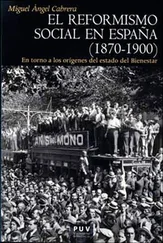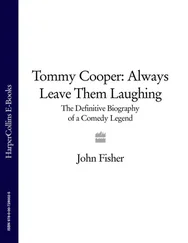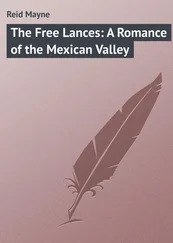To give coherence to such a label as Mormon literature, there is a need for something else besides a fiction that renders conflict in writing. Mulder lists three important developments in contemporary Mormon writing: expansion of content, discovery of techniques and a growing body of literary criticism ( Telling 159-160). It is precisely Mormon criticism that is key to understanding the improvement of Mormon literature in the 20 thcentury. I will add to my literary overview an analysis of how Mormon criticism has contributed to the study of Mormon literature, and thus, to its improvement. Criticism is fundamental to any literature. Its results are equally fundamental for providing the structure that comprises the years that contemplate the origination and development of any body of literature.
It is useful to divide Mormon literature into an accessible and coherent classification of four different periods, spanning the years from the foundation of the Church to the present-day. This division was first proposed by Eugene England in 1982 in an essay for BYU Studies . In the last thirty years, his essay has been republished several times. The edition that researchers usually quote from is the 1996 version that appeared in Tending the Garden: Essays on Mormon Literature , edited by Lavina Fielding Anderson and England himself. 12England remains one of the most important forerunners in Mormon criticism and William Morris labels his work as “crucial in this history” (4). In my understanding of this classification, there are some new secondary divisions required, since the contemporary period that England gathered in just one category has since grown more complicated. In any case, with slight changes, England’s is the pattern I follow to outline my summary of Mormon literature.
Naturally, in the first period, from the 1830s to the 1880s, attention should be centered on The Book of Mormon . Many literary critics, such as Mulder, England and Neal Lambert, point out that Mormonism began with a book (the Book of Mormon ) 13and that the Mormons are therefore the people of a book. John Bennion explains how Mormons relied on references to the great stories of Mormon culture in order to form their identity ( Popular 173). Accordingly, we realize how important writing and literature have been for the foundation of the Church of Latter-day Saints and for the formation of Mormon identity and culture. Additionally, this period gives readers a certain amount of unsophisticated works produced by the members of the Church during the pioneering days. These are mainly in the form of letters, diaries, journals, sermons and hymns (England, Mormon 1). These first works can be considered an important legacy, providing insight both of the practical needs of the Church (hymns and sermons) and as personal records of the convert experience in those days (diaries, memories, letters). As historical artifacts, they can be seen as providing crucial help for understanding the convert experience and the struggle involved in settling and developing the community. In their literary dimension, even though they can be said to be unrevised and unsophisticated, Mulder claims that these first works exhibit what he calls the Mormon “genius” ( Telling 158), considering later works to have lost that genius due to their increasing submission to literary types. This period also saw the first attempts at Mormon literature, boasting some remarkable poetry by Emmeline B. Wells and Eliza R. Snow.
In the Mormon literature of this period, should also be included the important 19 thcentury sub-genre known as “the Mormon-menace novels” (Peterson, Mormon 849). 14Not written by Mormons themselves, but by gentiles who took advantage of the mythic and mysterious characteristics of Mormon idiosyncrasy to fuel their creative work, Terryl L. Givens has analyzed this anti-Mormon literature that was fashionable during the 19 thcentury, and he concludes that they played an important role in the shaping of Mormon identity. Mormon scholar Leonard J. Arrington has stated that the work of these writers—together with other public lectures and writings by 19 thcentury humorists—influenced national attitudes against Mormons and promoted some of the national policies that the Federal government issued in those years (Cracroft, Distorting 272). The first of these novels, Captain Frederick Marryat’s Monsieur Violet , was written in 1843, but the tendency persisted all throughout the 19 thand even into the 20 thcentury. Very famous writers such as Artemus Ward, Mark Twain and Arthur Conan Doyle resorted to that mythical darkness that distorted Mormons for the sake of fiction, usually by way of mockery, and frequently using them as villain-figures. Conan Doyle’s 1887 book, A Study in Scarlet— the first of the Sherlock Holmes series—portrays Mormons as an intolerant and narrow-minded community. In drama, there are also examples of this trend. In her review of anti-Mormonism in American drama in the 19 thcentury, Megan Sanborn Jones, for instance, mentions, among others, James B. Runnion’s One Hundred Wives , first produced in 1881 at the Booth’s Theatre in New York.
If these writers inaugurated a literary trend, it is easy to anticipate that it did not die with them. Michael Austin has studied how contemporary novels display the standard anti-Mormon characteristics set by these first novels. Even if this fashion nowadays looks sporadic and partial, before Austin’s research Levi Peterson had already evaluated a sequence of anti-Mormon works spanning from mid-19 thcentury to the first decades of the 20 thcentury. This heritage invites researchers to estimate that the tradition exemplifies a temptation of successful fiction that could last in time and fashion.
England proposes a second period that takes him from the 1880s to the 1930s. In 1888, Bishop Orson F. Whitney tried to defend the Mormon community from external attacks by stressing the importance of literature, culture, and wisdom to achieve the mission for which the Mormons had been selected. His speech, fundamental to Mormon literary history, marks the beginning of this second period. Whitney rallied for a Mormon literature based on the Restored Gospel, which was rooted in Mormon tradition and pretended to defend the Saints from the attacks of the gentiles. Mormon-menace novels are the best example of Mormon presence in that period’s literary production, but the social and economic situations of those days also serve to explain Whitney’s preoccupation with Mormon culture and community.
The literature written by Mormons in this second period was labeled “Home Literature” and Utah saw its birth some years after Whitney’s speech was delivered. It consisted of very didactic fiction and poetry whose basic aim was to defend the community from outer attacks and to spread orthodoxy among the members of the Church. The best outlets for this kind of literary production were the magazines sponsored by the Church. Periodicals such as Young Men’s Journal , The Contributor , The Woman’s Exponent , Utah Magazine and The Improvement Era were perfect channels for awarding visibility to the poems and short stories that promoted orthodoxy among young members. However, there were also some other pieces of fiction or literary works published during those days. Susa Young Gates, Josephine Spencer, Auguste Joyce Crocheron, B. H. Roberts, Emmeline B. Wells and some others were successful in making their poetry and fiction available to a growing audience.
The best example of this period is writer Nephi Anderson and his highly acclaimed novel Added Upon (1898), a very didactic and sophisticated work. The influence of writers such as Anderson has remained strong until today. Many readers contemplate Anderson’s books as an uplifting source from which to fortify their faith and their sense of belonging in the community; others, in turn, censure the overt didacticism and his narrow discourse that seems to speak only to a very specific readership. Even though it is true that every book written by Anderson possesses a didactic tone, and that all were apparently delivered for a specific audience, some of his novels, Dorian (1921), for instance, are also relevant for an analysis of the literature being produced in those days beyond a Mormon orbit. Dorian shows that Anderson was a gifted writer even if he sometimes drove that talent toward a moral agenda that spoiled his work in the eye of an outsider. Besides, it contains the significance of the novels written on the edge of two different historical periods: it tells more than what emerges from a first reading.
Читать дальше












